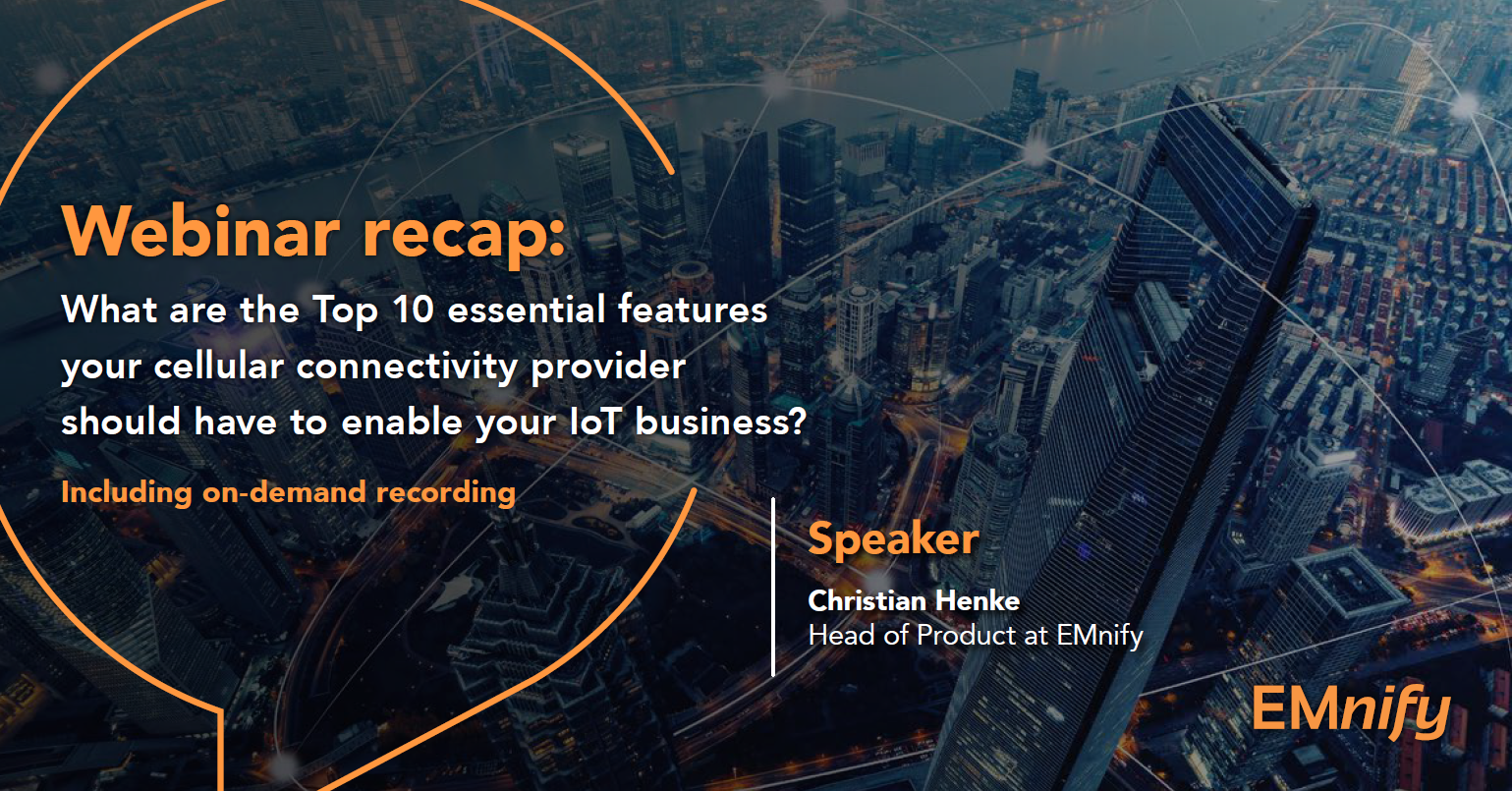

With over 20 billion devices globally connected, the Internet of Things is growing rapidly. That said, choosing the right connectivity provider for your business can be a daunting and challenging task. Regardless of the industry - whether you are in manufacturing, healthcare, or fleet management - there are essential features that any cellular connectivity provider should have.
On the 8th of April of 2020, our Head of Product, Christian Henke, led the webinar discussing the essential features your cellular connectivity provider should have to enable your IoT business. Read the webinar recap and watch the on-demand recording to ensure your provider is delivering all key features.
You can also download the slides here
Below are the top 10 essential connectivity features you should know about and consider implementing them in your business, in case you haven't done that already.
1. Web-Portal and API
Comprehensive Web-Portal is an essential tool to manage your SIMs and connectivity in a fast and simple way on every stage of your product’s lifecycle – would it be a start of deployment, growth, or maturity. Starting from something as simple as activating or deactivating your IoT SIM's contract in the Portal on a click of a button or by integrating the API into your IoT application to enable scalability within your service team.
2. Service Limits
Service limits feature allows you to set limitations for data volume or sent SMS for each device / IoT SIM. Based on real-life examples from our customers - payment terminal firmware updates can lead to increased data consumption, or when the application server is down, devices are retrying to send data which results in increased costs. Setting limits will prevent these over-usage costs.
3. Network Blacklisting
Let’s say a payment terminal, from a previous example, is in an underground bar and attaches to network A but cannot transfer data (uplink interference). When the bar owner calls in the payment terminal service team, they can block network A and the device will try to utilize other networks to send and receive data. When the payment terminal app uses the API, the customer / bar owner can even select and steer the networks himself until it works seamlessly.
4. Signaling Events
With signaling events, you get a real-time view on how the modem communicates with the network and possible errors – attach, location update, data session creation, etc. For example, service teams can quicker identify the root cause of issues - when the device communicates with mobile network but not able to send data, because of wrong device implementation, service limit is reached or device is in country which is not part of rate plan.
5. Reset Connectivity
It can happen that one of thousands of devices end up in a network state from which it cannot recover (e.g. uplink interference, not perfect device implementation). With reset connectivity you can easily reset the network state by sending a message (Map Cancel) to the visited network to unblock the device.
6. Private Static IP / VPN
With all the opportunities that IoT connectivity presents, there are security vulnerabilities, communication challenges and logistical obstacles. With secure remote access to a device through OpenVPN (which is free of charge for EMnify customers) you can login to your device anytime and retrieve logs as well as execute commands to troubleshoot.
7. IMEI Lock
The IMEI is a unique number used to identify devices connected to a GSM network. The IMEI lock option allows you to lock the use of a SIM specifically to a device, indicated by its IMEI code. For example, payment terminal providers can makes sure that bar owner (or someone stealing the terminal) cannot use the SIM privately.
8. Active SIM Data Pooling
With data pooling, you can aggregate the usage of data and SMS across all active devices so any data coverage is balanced out between all IoT SIMs without extra costs. Allowing your entire fleet to share from a single data plan eliminates unwelcome data coverage charges from some high-usage SIMs.
9. SMS-API / Portal
SMS is the only communication channel which works on every device, in every network, and offers full visibility on delivery status. SMS is exchanged using a radio-signaling channel that is established as soon as the device is attached to a network. With only a couple of clicks in the management platform you can send an SMS to your device and with that apply configuration changes needed.
10. Local Breakout
With a distributed mobile network, local breakouts enable data transfer from the endpoint to the closest breakout region, and therefore significantly reduce the distance between the endpoint and application server. Devices all over the world will always use the shortest route to the application server which results in reduced latency and higher performance.

Christian Henke
If you want to understand how emnify customers are using the platform Christian has the insights. With a clear vision to build the most reliable and secure cellular network that can be controlled by IoT businesses Christian is leading the emnify product network team.



